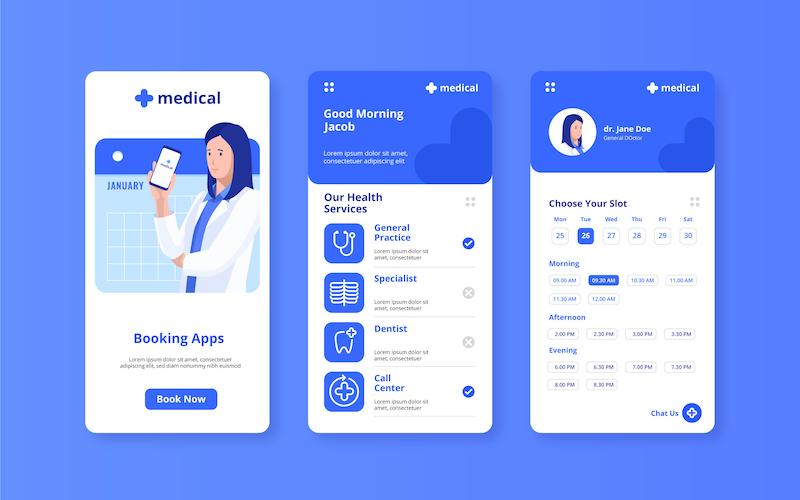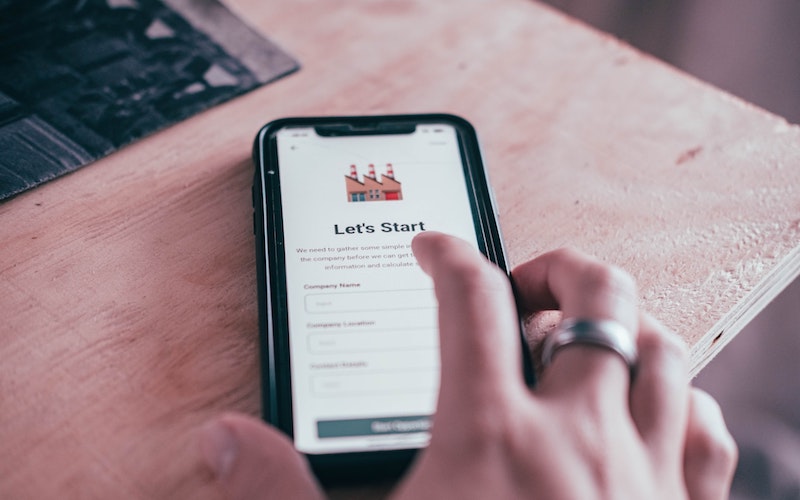
It’s no secret that gadgets have been consuming different parts of our lives for some time now. This trend is observed even among the older generation, which used to be skeptical of comprehensive digitalization. It is therefore not surprising that these processes have reached the healthcare sector.
With the help of health apps, users can track and use medical data — which was previously strictly the domain of a specialist. The recent Covid-19 pandemic further advanced this process, motivating businesses to create useful healthcare tools.
The healthcare app market is expected to grow to $314.60 billion in 2028. With so many options available, it is worth paying special attention to ways to attract potential customers and retain them. In this article, we’ll explore seven strategies that can help increase customer engagement in your healthcare app.
1. Onboarding New Users Smoothly

A smooth onboarding process can set the tone for a positive user experience and help build a strong relationship between the user and your app. Healthcare apps tend to be packed with various features and tools. That is why it is important to include a brief explanation of navigation in the app and the purpose of each menu item. Ideally, there should be no glitches in the processes of data collection, permissions setup, etc. This will ensure the user has a positive initial impression of your app.
This can be as simple as setting a daily step goal or tracking the user’s progress toward a health-related goal.
2. Gamify the App Experience
Gamification is a popular strategy for increasing engagement in healthcare apps. For example, “MyFitnessPal” asks users to set goals and track their progress, then uses this info to offer rewards and badges to users who successfully meet their goals. This encourages them to interact with the app on a regular basis and stay for longer.
Some other examples of gamification in healthcare include progress displays, challenges, competitions, simulation gaming, and real-life rewards. This keeps your customers coming back to your app for more features while also boasting the possibility of preventing diseases and reducing healthcare costs.
3. Use Push Notifications
Push notifications play an essential role in keeping users engaged in your healthcare app. They can remind users to complete daily tasks, track their progress, and offer personalized health tips.
Even though an average user (in the United States) receives an average of 46 push notifications per day, this method remains effective in customer engagement — if used wisely. For instance, 40% of users are more likely to respond to a push notification if it is sent at an agreed time.
In healthcare apps, the most common example of push notifications is a reminder to perform regular actions specified in the app (exercise, drink a glass of water, meditate, measure blood sugar, etc).
4. Integrate Social Media
Integrating social media into your healthcare app can help increase user engagement by connecting users with their friends and encouraging them to share their health-related goals and achievements. This can create a sense of community and accountability, enabling users to stay engaged with the app and its features.
For example, a fitness app could allow users to connect with their friends and see each other’s workout progress, providing a sense of competition and motivation. This can help keep users motivated to reach their health and fitness goals.
5. Develop Loyalty and Other Reward Programs
Founders often overlook long-term customers in an effort to acquire new ones or entice lost customers to come back. However, selling to a newly acquired customer often costs 5 to 10 times more. This is despite the fact that current customers, on average, spend 67% more than new ones.
Keeping your customers happy is paramount. Reward them for their loyalty by offering gift cards, discounts, and various deals for engaging with your app regularly. You can also incentivize them to refer friends by offering a bonus for that. By showing your customers that you value their dedication, you can increase their loyalty and make them more likely to stick around.
6. Segment and Personalize Your Audience
You must understand that customers come from different backgrounds. They all have cultural and lifestyle choices that have varied healthcare implications. These cultural nuances also affect their healthcare expectations.
To reach the right audience, segmentation can be beneficial. This involves dividing your customer base into distinct groups based on demographics, behavior, or interests. By doing so, you can tailor your engagement strategies to each group and increase their overall engagement with your app.
Segments of Users in Healthcare
There are several distinct segments of healthcare app users, including:
- Shop while saving: They are the least eager to spend money on your products. They make up 4% of healthcare consumers.
- Out and about: This group prefers a personal touch. They want a personalized experience and are open to seeking alternative options to get this personalization. They make up 9% of the U.S. healthcare population.
- Sick but savvy: They make up a sizable 14% of healthcare seekers in the U.S. because of their conditions. This demographic will often make their treatment decisions in partnership with their physicians.
- Onboard and online: Always on the lookout for new technologies, methods, and alternative medical procedures despite being satisfied with their health. They make up 17% of your target customers. They spend much time online reading about their health, so why not keep them reading on your app?
- Compliant and content: They play by the rules and keep their decisions in tune with their insurance plans, physicians, and hospitals. They comprise 22% of the healthcare population in the United States.
- Cautious but casual: The most significant demographic at 35% is not overtly engaged with their health. They mostly have no immediate need for healthcare services and are cost-cautious.
By understanding these different segments, you can personalize your engagement strategies to reach and engage each group better.
7. Use Analytics to Measure Engagement

With data, it is possible to know what strategies are working and which need to be adjusted. When you analyze the data from your engagement metrics, you will gain valuable insights into your customer’s behavior.
For example, you may discover that gamification strategies positively impact user engagement or that push notifications are more effective at certain times of the day. Understanding the results of your efforts can help you make informed decisions about future engagement strategies.
Conclusion
Keeping your customers engaged with your healthcare app is crucial for its success. By using onboarding, gamification, push notifications, social media integration, loyalty programs, audience segmentation, and analytics, you can increase customer interaction and engagement with your app. By creating a personalized experience and measuring the results, you can build long-term relationships with your customers and enrich their daily lives.
